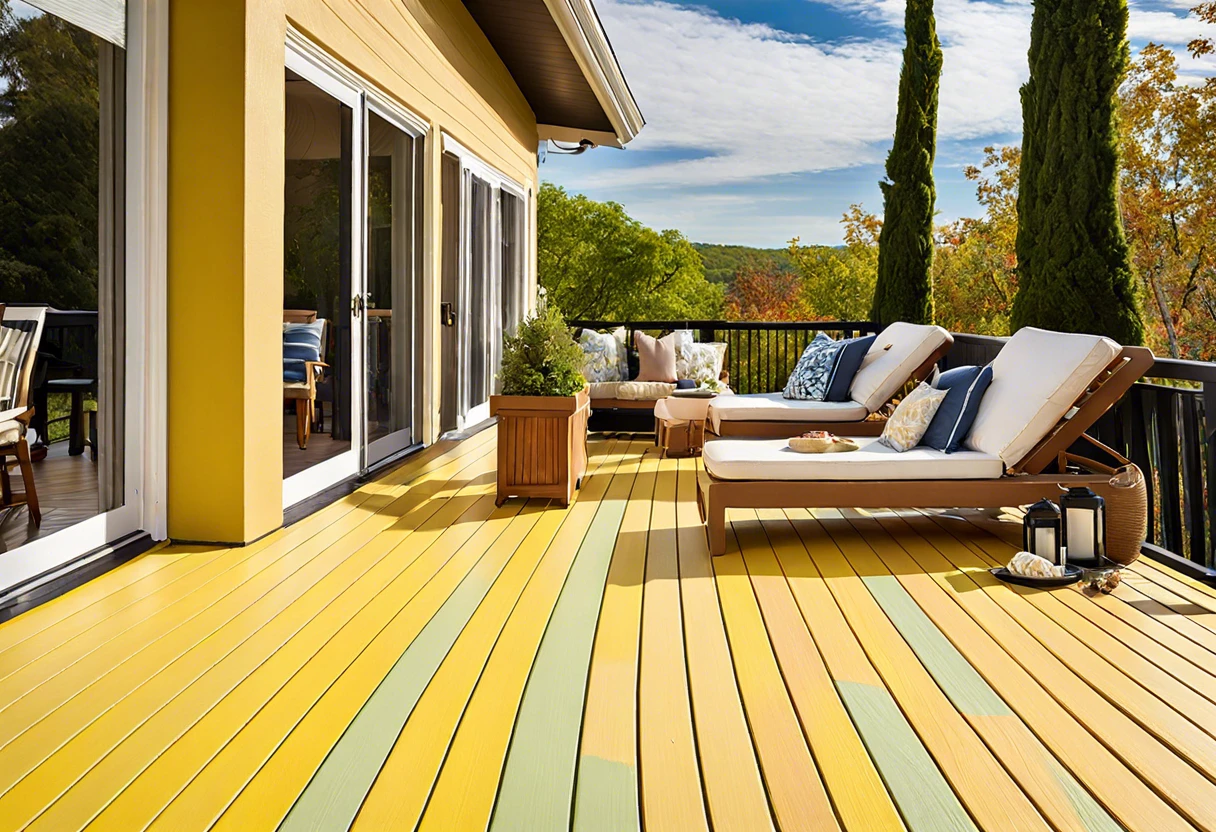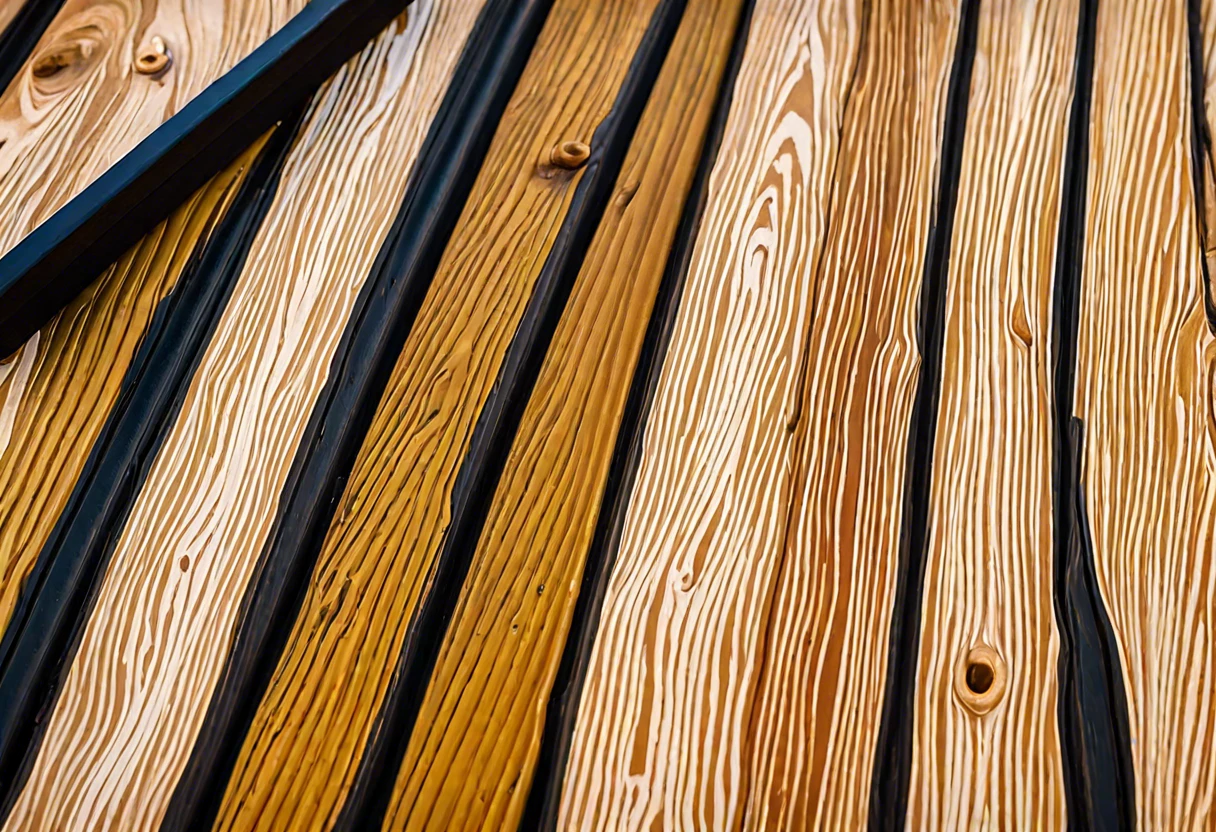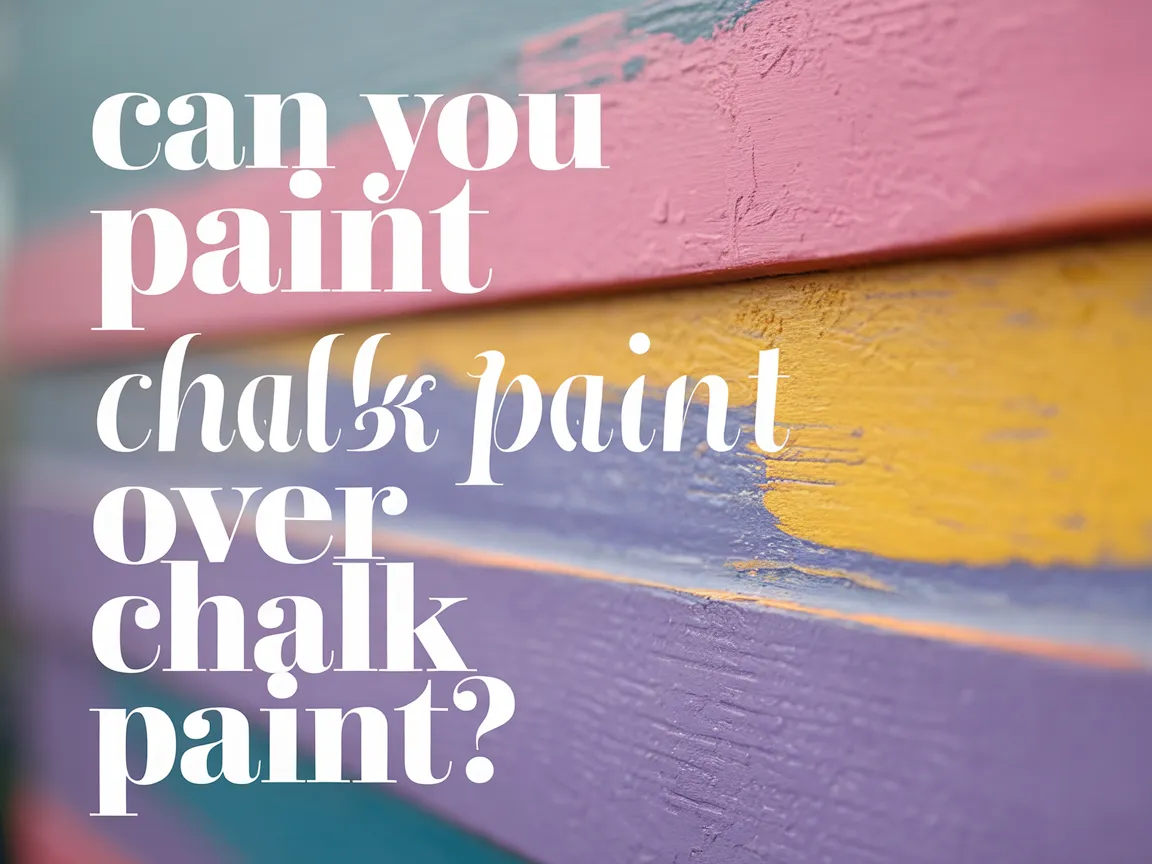What Deck Paint Lasts the Longest?
Deck paint is special paint that goes on your outdoor wood floors. It makes them look pretty and protects them from rain, sun, and mud.
So, what deck paint lasts the longest? This question is super important because a good paint job keeps your deck looking nice and lasts for years. I’ve seen decks fall apart because of bad paint choices, and let me tell you, it’s not a pretty sight!
In this guide, you’ll learn about essential prep steps, the kinds of deck paint that last the longest, factors affecting durability, and some creative DIY project ideas. From how to paint an old deck to tips on removing old paint from your decking, we’re covering everything you need to know for a successful deck makeover!
Contents
- 1 What Deck Paint Lasts the Longest?
- 2 What is ‘Deck Paint’?
- 3 Essential Preparations Before You Start Painting
- 4 Steps to Ensure a Long-lasting Deck Paint Finish
- 5 Types Of Deck Paint That Offer Maximum Longevity
- 6 Choosing the Right Finish: Gloss vs. Matte
- 7 Maintenance Routines for Extended Deck Paint Life
- 8 Comparative Longevity of Popular Deck Paint Brands
- 9 Environmental Considerations in Deck Paint Selection
- 10 Common Issues Encountered When Selecting Deck Paint
- 11 Finishing Touches for Enhanced Longevity
- 12 Frequently Asked Questions About Deck Paint Longevity
- 13 Conclusion
- 14 Additional Resources
What Deck Paint Lasts the Longest?
If you want paint that holds up, look for high-quality acrylic latex. It lasts up to 10 years! For even more durability, opt for oil-based paint. Both types resist fading and cracking better than others. When painting tricky areas like behind radiators, you’ll need specialized techniques to ensure complete coverage and precision.
The Finishing Touch
A freshly painted wall is a blank canvas. The best way to bring your room to life is with a single piece of statement art that ties everything together.
Browse Wall Art at Big Wall DecorWhat is ‘Deck Paint’?
Deck paint is a specialty coating for wooden and composite outdoor deck surfaces. It typically contains 40-60% solids, ensuring durability and protection from sun, water, and wear.
Some deck paints perform better over time than others. In my experience, brands with higher ratings last years longer, especially when matched to the decking material.
I once used a specific brand of deck paint for my patio, and it made a significant difference. When simplifying how to paint an old deck, I found that choosing a longer-lasting paint cut my future maintenance in half—such a game changer! If you’re curious about adding creative elements to your painting projects, you might want to explore advanced animation techniques.
Essential Preparations Before You Start Painting
What do you need to prepare for the best deck paint results?
- Pressure Washer: Use a high-powered washer like the Simpson Cleaning PS3228-S, with 3200 PSI (Pounds Per Square Inch). This tool effectively removes dirt and old paint, prepping your deck for a fresh coat.
- Decking Stain Remover: Get a product like Restore-A-Deck RADECKSTAIN to tackle stubborn stains. It’s crucial for ensuring a smooth, clean surface that helps the new paint adhere.
- Sandpaper: Use a range of 60 to 120 grit for rough surfaces. Sanding allows for better bonding of the new paint. You’ll want your paint to last, right?
- Masking Tape: A good quality tape like Scotch-Mask is essential for keeping edges neat. This avoids mistakes in your paint job, saving you from rework later.
- Caulk and Sealant: Choose a polyurethane-based caulk like DAP 29584 to seal cracks and gaps. Sealing these areas prevents moisture from causing paint to peel.
That covers essential preparations for painting. Let’s now take a look at steps to ensure a durable deck paint finish.
Also See: Can You Paint Me a Birmingham? Discover Its Charm!

Steps to Ensure a Long-lasting Deck Paint Finish
Here are steps to maximize the longevity of your deck paint.
The Finishing Touch
A freshly painted wall is a blank canvas. The best way to bring your room to life is with a single piece of statement art that ties everything together.
Browse Wall Art at Big Wall Decor-
Choose the Right Deck Paint Type
Select a deck paint that suits your material. Acrylic paints are great for wood decks, while oil-based paints last longer on concrete.
Look for products labeled “weather resistant” or “extreme abrasion resistance.” These often last 5 years or longer with proper care.
-
Prepare the Deck Surface Properly
Clean the deck thoroughly using a pressure washer at 3,000 psi (Pounds Per Square Inch) to remove dirt and mildew. Let it dry for at least 24 hours before painting.
Patch any cracks with exterior filler to prevent peeling. If your deck has old paint, strip it off completely for a strong bond with the new paint.
-
Apply a Quality Primer
Seal the wood with a high-quality primer. This helps your paint adhere better and can prolong the paint’s lifespan by 1-3 years.
For water- or oil-based paints, use primers specifically designed for exterior decks. Apply it in a thin, even layer, ensuring no areas are missed.
-
Choose the Best Application Method
Use a brush or roller to achieve an even coat. Use bristle brushes for smooth wood and foam rollers for flat surfaces.
Maintain a wet edge while painting. Painting early in the morning keeps everything cool, helping avoid quick dry spots and streaks.
-
Follow Recommended Drying Times
Let each coat dry fully before applying the next; typically 6-8 hours for most paints. Don’t rush this—proper curing can add more years to your finish.
Complete weather resistance usually sets in after about 28 days. Avoid foot traffic during this time to protect your investment—it’s worth the wait!
So far we covered ways to achieve a durable deck paint finish. Let’s look at types of deck paint for lasting results.
Types Of Deck Paint That Offer Maximum Longevity
Let’s explore the types of deck paint: Acrylic, Oil-Based, Epoxy, and Composites.
-
Acrylic Deck Paint
Acrylic paints are water-based and offer excellent UV protection. They last 5 to 10 years before fading.
-
Oil-based Deck Paint
Oil-based options resist weathering well and can last 7 to 15 years, depending on conditions.
-
Epoxy Deck Paint
Epoxy paint provides a hard, durable finish and lasts up to 10 years. It’s ideal for high-traffic areas.
-
Composite Deck Paint
This paint is designed for composite materials like Trex, blends in well, and lasts about 5 years. It’s moisture-resistant!
In my experience, oil-based deck paint offers superior longevity and durability. Its weather resistance across various climates has impressed me over the years.
We have now covered types of deck paints that provide long-lasting durability. The next section will focus on selecting the ideal finish.
Choosing the Right Finish: Gloss vs. Matte
Did you know the finish of your deck paint can impact its longevity?
- Glossy Finish: High gloss paints are shiny and reflect more light. They last longer due to enhanced resistance to moisture and dirt. However, be aware—gloss can show imperfections easily.
- Matte Finish: Matte paints offer a non-reflective surface. While they hide imperfections, they may not be as durable as gloss options. Expect to maintain matte finishes more frequently to combat fading.
- Satin Finish: This is a middle ground, giving a soft sheen. It combines the durability of gloss with the subtlety of matte, making it a popular choice.
We have now covered the differences between gloss and matte finishes. The next section will discuss maintenance routines for deck paint longevity.

Maintenance Routines for Extended Deck Paint Life
Want to keep your deck looking fresh? Routine maintenance is key!
- Quarterly Inspections: Check for wear and tear. Look for blisters, cracks, or peeling.
- Cleaning Regimen: Use a gentle cleaner every season. I recommend a non-toxic cleaner to avoid harsh chemicals harming your plants.
- Recoat Regularly: Applying a top coat can refresh your deck every 12-18 months. It helps maintain color and protects against UV rays.
Don’t let a little maintenance slip through the cracks! Your deck deserves it.
Comparative Longevity of Popular Deck Paint Brands
Here’s a snapshot of how some common brands stack up in terms of longevity.
| Brand | Type | Estimated Lifespan (Years) | UV Protection |
|---|---|---|---|
| Behr | Acrylic | 5-10 | High |
| Rust-Oleum | Oil-Based | 7-15 | Medium |
| Sherwin-Williams | Acrylic | 5-12 | High |
| Olympic | Deck Stain | 4-8 | Low |
Environmental Considerations in Deck Paint Selection
Choosing eco-friendly paints can also affect durability and health. Here’s what to think about.
- Low VOC Options: Volatile organic compounds (VOCs) can harm the environment. Low VOC paints minimize toxicity without sacrificing longevity.
- Biodegradable Paints: They’re made from natural materials. While they might not last as long, they’re better for the planet.
- Recycled Products: Some brands incorporate recycled components. Support sustainable practices while ensuring quality.
Common Issues Encountered When Selecting Deck Paint
A friend once spent days searching for the longest-lasting deck paint. He ended up choosing a color that faded after just one summer!
The Finishing Touch
A freshly painted wall is a blank canvas. The best way to bring your room to life is with a single piece of statement art that ties everything together.
Browse Wall Art at Big Wall DecorTo prevent fading, I suggested a paint labeled for UV protection, such as those containing titanium dioxide. This improves durability and lasts about 4–6 years on average!
Finishing Touches for Enhanced Longevity
After considering durable deck paint options, maintain it by applying a UV-resistant sealant every 12 to 24 months. This protects your paint from fading and peeling.
Inspect your deck every three months for wear, focusing on areas like stairs and railing edges where damage often occurs. Use products like Star brite Non-Skid Deck Cleaner (Or Equivalent) to check for wear patterns. If you’re wondering about alternative paint applications for maintenance, painting techniques can vary depending on the surface material.
An insider tip: For lasting aesthetics, combine elastomeric (Stretchable) coating with a sand additive, such as Evercoat NON-SKID, to improve traction without sacrificing durability, especially in wet conditions.
Frequently Asked Questions About Deck Paint Longevity
Here are some common questions I typically get asked.
What Are the Best Brands Of Deck Paint for Durability?
Some of the best brands of deck paint for durability include Behr, Rust-Oleum, and Sherwin-Williams. These brands are known for their high-quality ingredients that provide enhanced UV protection, weather resistance, and a longer life span, sometimes up to 15 years. Professional painters often recommend exploring specialized paint color techniques to maximize coating performance.
How Often Should I Repaint My Deck?
You should repaint your deck every 2 to 5 years, depending on the paint quality, weather exposure, and foot traffic. Factors like direct sunlight can degrade paint quicker, leading to more frequent maintenance. If you’re looking to tackle a similar painting project, exterior painting techniques can help you achieve a smooth, professional finish.
Can I Paint Over Old Deck Paint?
Yes, you can paint over old deck paint, but you must prepare the surface first. Cleaning, sanding, and priming are essential steps to ensure proper adhesion and longevity of the new paint.
What is the Difference Between Paint and Stain for Decking?
The difference between paint and stain for decking lies in their composition and finish. Paint creates a thick film that offers color and sealing, while stain penetrates the wood, enhancing its natural grain and protection against moisture. If you’re considering changing the color of your deck, you might want to explore professional painting techniques.
How Do I Know if My Deck Paint is Fading?
You can know if your deck paint is fading by examining if the color looks dull or if you see wood grain through the paint. A simple water test can help; if water beads on the surface, it’s still protecting, but if it soaks in, it’s time for a refresh. When selecting the right paint for your project, I recommend exploring professional airbrush painting techniques to ensure optimal coverage and durability.
How Do I Remove Paint From My Deck?
To remove paint from your deck, consider using a paint stripper or a pressure washer with the right nozzle. Be sure to follow the manufacturer’s instructions carefully to avoid damage to the wood deck surface. If you’re wondering about mixing different paint types for your project, you might want to explore paint compatibility techniques.
How Can I Refinish a Painted Deck?
Refinishing a painted deck involves stripping off the old paint, sanding the surface, and applying a new coat. Proper preparation is key for the best results and longevity of the new finish.
Can I Paint Trex Composite Decking?
No, you shouldn’t paint Trex composite decking. Painting may void the warranty and can lead to surface damage. Instead, use specialized cleaning products designed for composite materials.
Conclusion
We covered a lot in this article, including what deck paint lasts the longest, essential preparations before painting, steps for ensuring a long-lasting finish, recommended color palettes, types of durable deck paints, and common issues you might face.
Basically, if you’re asking what deck paint lasts the longest, stick to high-quality, weather-resistant options and remember to prep your surface well. I hope these tips prove valuable to you as you embark on your deck painting journey.
For further insights and guidance, visit Paint Answers.
Additional Resources
- Edwards, B. (2012). Drawing on the Right Side of the Brain. New York, NY: TarcherPerigee.
- Quick drying, slip-resistant, colourful… these are the very best decking paints to choose from
Isabella is a Filipino-American art writer and critic specializing in contemporary painting, blending her Filipino heritage with global art trends. She holds a BFA from California State University, Long Beach, and a Minor in Art History from the University of the Philippines. Isa has experience as a Gallery Assistant, Art Appraisal Specialist, and Social Media Creative for Art & Design.
Deck, Exterior









